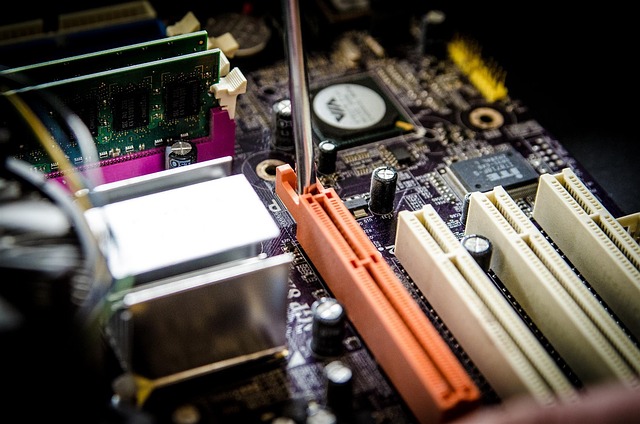
World Economic Forum and Scientific American forecast the breakthrough technologies likely to create significant social, economic, and environmental effects worldwide.
Some of these innovations have quickly entered the mainstream and become part of daily life, World Economic while others have progressed more slowly and struggled to gain traction.
Read more about Importance of parenting
Read more about Woeld economic
Ahead of the 10th Anniversary edition of the Top 10 Emerging Technologies Report, set to launch on 16 November, we revisit highlights from the past nine editions and ask: did these technologies truly reshape the world, or fall short of expectations? What influence do they have today, and what direction are they taking next?
Electric Aviation
Among the most recent additions to the Top 10 Emerging Technologies, electric aviation appeared on the 2020 list. While the concept isn’t entirely new—electric gliders have been around for some time—innovation in the field has picked up speed recently, largely due to World Economic Forum and Scientific American forecast the breakthrough technologies likely to create significant social, economic, and environmental effects worldwide. the aviation industry’s push to reduce carbon emissions.
“We are moving toward a zero-carbon future. Aviation is responsible for about 2% of global emissions, and that figure is expected to climb, even after COVID,” explained Katherine Hamilton, Chair of 38 North Solutions and Co-Chair of the World Economic Forum’s Global Future Council on Clean Electrification.
“Hundreds of firms are now experimenting with solutions, and demand is growing quickly. A supply chain is forming around the sector, and perhaps most importantly, major buyers such as United Airlines, Airbus, DHL, and UPS are already placing orders for these aircraft.”
Electric aviation can generally be divided into two categories—hybrid and fully electric aircraft. Conventional fixed-wing planes can be retrofitted, and a new class of electric vertical take-off and landing (eVTOL) vehicles is emerging. These are designed for urban mobility, taking off like helicopters but transitioning into airplane-style flight.
Battery progress has been notable, though energy density continues to be a major limitation.
“Fortunately, thanks to developments in electric cars and grid storage, battery technology has significantly advanced. Lithium-ion batteries are now much more energy-dense, and solid-state batteries are on the horizon. Hydrogen fuel cells are another option, meaning we’ll need a mix of technologies to serve the wide range of applications in electric aviation.”
Many firms are already experimenting with these emerging technologies, and Hamilton notes that we could see some of the smaller aircraft approved for flight as early as 2023.
“The first key area to address is the small, two-seat training planes, which should be ready within the next few years. After that, the challenge will be enabling flights that cross oceans. That will likely take longer, but progress has to be made step by step.”
She emphasizes that it’s not just about creating new solutions, but also about expanding them at scale, ensuring a reliable supply chain for the components that will go into these planes, and making sure they are properly certified. “That way, when passengers board, they can trust the aircraft has been built safely for travel and feel more comfortable about flying in it.”
The World Economic Forum will release the 10th Anniversary edition of its Top 10 Emerging Technologies Report on November 16.
Leading up to the launch, we’re reflecting on some of the most influential emerging technologies from the past decade.
Not every new technology has fully matured yet.
Over the last ten years, major breakthroughs have transformed how we live, work, and connect with one another.
However, many of these innovations either unfolded behind the scenes in labs and private firms, or they became such an everyday part of our routines that they slipped by almost unnoticed.
Looking at emerging technologies
Each year, specialists gathered by the World Economic Forum and Scientific American forecast which technologies are likely to make a significant social, economic, and environmental impact globally.
Some of these innovations quickly captured public attention and became part of daily life, while others have taken longer to develop.
Ahead of the release of the 10th Anniversary edition of the Top 10 Emerging Technologies Report on November 16, we’re revisiting highlights from the last nine years: did they truly change the world, or did they fall short? How do they affect our lives today, and where are they heading next?
Electric aviation
Electric aviation appeared on the 2020 list, though the concept has existed for years — for instance, with electric gliders. Recently, innovation in the field has accelerated, largely because aviation must cut carbon emissions.
“We’re moving toward a carbon-free future. Aviation makes up about 2% of global emissions, and that number is expected to rise despite COVID’s impact,” explains Katherine Hamilton, Chair of 38 North Solutions and Co-Chair of the World Economic Forum’s Global Future Council on Clean Electrification.
“There are hundreds of companies working on this and plenty of customers waiting. Supply chains are forming, and big players like United Airlines, Airbus, DHL, and UPS are already placing orders.”
The sector includes both hybrid and fully electric aircraft. Conventional planes can be converted, and new electric vertical take-off and landing (eVTOL) craft — designed for cities — operate like helicopters before transitioning into airplane-style flight.
Battery improvements remain key.
“Thanks to electric vehicles and energy storage, batteries are far more advanced now. Lithium-ion batteries are denser, and solid-state batteries are on the horizon. Hydrogen fuel cells will also play a role, since different technologies are needed for different aviation uses.”
Some smaller aircraft may receive certification as early as 2023.
“The first target is small, two-seat training planes. Ocean-crossing flights will take longer, but we’ll move step by step,” Hamilton says.
Scaling innovation and securing reliable supply chains are crucial, along with rigorous safety approval, so passengers can trust the planes they fly in.
Artificial intelligence
AI made the 2018 list when IBM’s Project Debater successfully argued against a human opponent.
Sophia Velastegui, Chief Technology Officer for AI at Microsoft Dynamics 365, notes that teaching machines to debate is just one example of AI’s potential.
“The core of digital assistants is machine learning focused on natural language understanding, enriched by context and sentiment. This lets systems turn speech into text, recognize topics and emotions, and keep a conversation going.”
Although fully conversational AI is still a work in progress, tools like Xiaoice show its promise — racking up half a billion interactions within three months of launch, averaging 23 exchanges or roughly 10 minutes per chat.
In the coming 5–10 years, Velastegui expects conversational AI to become a much bigger part of both work and personal life.
“Human–AI partnerships will grow, just like how advanced AI reshaped online search. People of all ages will be able to engage naturally and confidently with these systems.”
But several hurdles remain: affordable, capable mobile devices and widespread connectivity; 5G for faster, smoother responses; stronger cloud computing for conversation processing; and smarter Internet of Things networks to provide more signals. More specialized training is also needed so AI can understand context and achieve higher accuracy.
Genetic engineering
What we understand today is only a glimpse of the vast potential genetic engineering holds for transforming human health and global food security in the years ahead.
That’s the view of Feng Zhang, a Neuroscience Professor at MIT and one of the leading figures behind the CRISPR-Cas9 gene-editing system, a tool designed to correct specific errors in human DNA.
Genetic engineering appeared on the 2015 list of Top 10 Emerging Technologies, and since then, its progress has accelerated dramatically, largely due to the CRISPR breakthrough.
Much like using a “search” tool to spot errors in a document, CRISPR-Cas9 operates within cells to locate mutations and repair them, Zhang explains.
“You can supply it with an RNA guide. CRISPR-Cas9 uses this guide to scan the genome, pinpoint the location of the mutation, and then remove or replace DNA sequences as needed.”
CRISPR stands out among genetic engineering tools because it is much faster and simpler to customize for work inside cells.
“In the past, designing a new gene-editing tool for a particular gene could take weeks or even months. With CRISPR-Cas9, researchers can create a new editor in minutes and produce thousands of versions to investigate many genes and correct numerous mutations.”
The technique has already been applied in medicine, such as treating sickle cell anemia and inherited genetic conditions affecting organs like the liver. In agriculture, it is being used to develop crops that withstand drought while boosting productivity.
However, Zhang emphasizes that these breakthroughs come with serious ethical and regulatory considerations: “It’s crucial that we establish safeguards and decide carefully which applications we should pursue — and where we must draw the line.”
In the future, with the right combination of innovative materials, roads could not only repair themselves but also interact with robotic systems to assist in maintenance, purify the surrounding air, reduce flooding, and enjoy an extended lifespan.
This vision comes from Abir Al-Tabbaa, Professor of Civil and Environmental Engineering at the University of Cambridge, whose work centers on lowering the cost, carbon emissions, and overall environmental impact of cement.
Self-healing materials were highlighted in 2013 as one of the Top 10 Emerging Technologies. While self-repairing asphalt for roads and scratch-resistant, self-healing paint for vehicles are already advancing, developing self-healing concrete is more challenging—mainly due to strict construction standards.
“Biomimetic materials replicate natural processes and systems, which are able to detect their surroundings, adapt, respond, and mend themselves. These materials can self-heal, self-monitor, self-diagnose, and even self-protect,” Prof. Al-Tabbaa explains.
“Since natural systems are inherently low-carbon, energy-efficient, and generate minimal waste, they are much more sustainable.”
Reaching net zero by 2050 will require decarbonizing building materials, especially cement, which carries a heavy carbon footprint. Self-healing solutions can play a vital role in this transition.
“Alongside innovations in low-carbon cement that cut down on initial emissions, we must also reduce the lifetime carbon impact. Combining self-healing technologies with low-carbon cement systems allows for significant whole-life carbon savings.”
Prof. Al-Tabbaa hopes the construction sector will collaborate to speed up the integration of these materials.
Specifically for roads, the future may bring smart, self-repairing and self-monitoring surfaces that not only fix themselves but also help manage floods and capture energy—depending on the technologies built into them.





